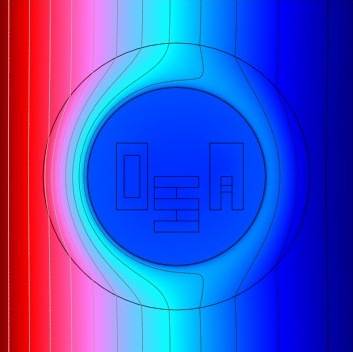As much as the military and Harry Potter have sought a cloak of invisibility, the science that studies light wave deflection is looking at thermal wave invisibility for creating heat shields. French researchers are intending to build materials that shield electronics to keep them cool or do the reverse, provide concentrated heat to generate power from a light source — the Sun.
Sebastien Guenneau heads up a research team at the University of Aix-Marseille and France’s Centre National de la Reserche Scientifique (CNRS). The team intends to develop prototype thermal cloaks for microelectronics that diffuse heat around a protected area. They have published their findings in Optics Express, in an article entitled, Transformation Thermodynamics: Cloaking and Concentrating Heat Flux. This type of heat shield would have many applications within microelectronics and space science. The reverse, focusing heat on a small volume would be used for enhancing the power and heat production for the solar energy industry.

Current thermal protection technologies include the reinforced carbon panels, ceramic tiles and resins used by the Space Shuttle, the plastic foams we see in the insulation used in commercial products like coolers, the aerogels that NASA has used in Martian rovers. How does “thermal invisibility” compare?
Whereas the materials described above absorb and diffuse the heat from its source, this new technology deflects it around the object rendering it invisible to the heat source. The French research team is working with PVC-type polymers, silver and gold with a prototype near completion.








[…] in 2012, I posted an article describing the creation of a thermal invisibility cloak designed to hide electronic heat […]